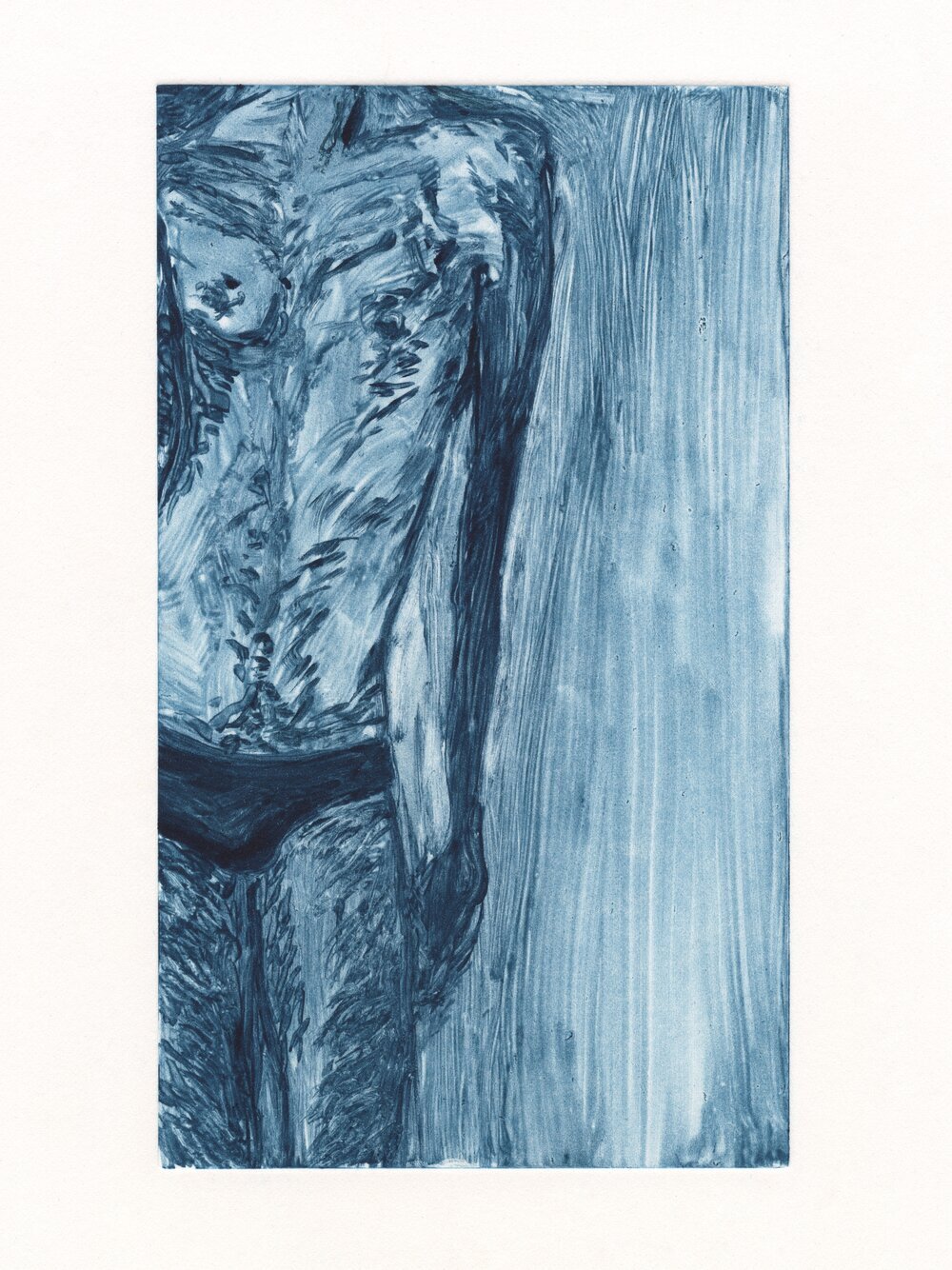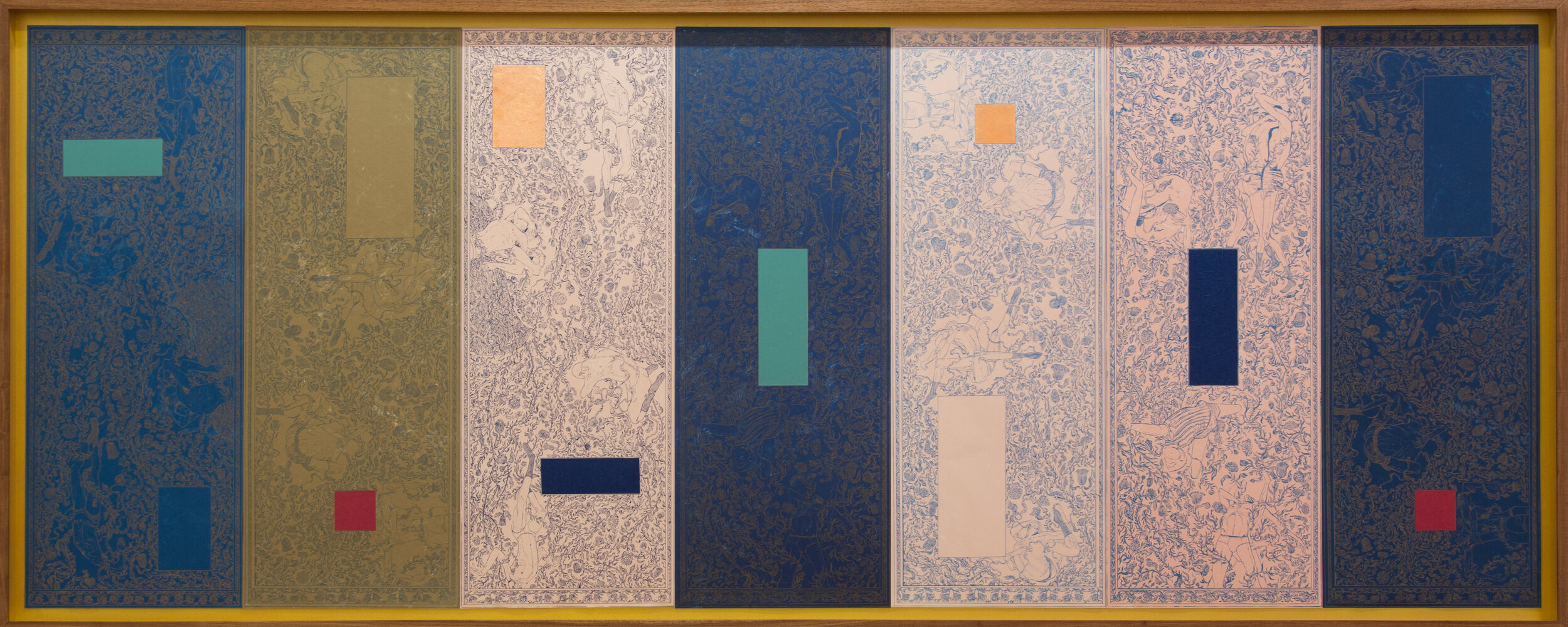Shakil Solanki
Shakil Solanki, Georgina Berens, 2020
SOL chatted to talented and insightful Cape Town Artist Shakil Solanki about his journey into the world of arts starting from his vivid and bright Hindu upbringing, his love for David Hockney and Derek Jarman, the colour blue and his current obsession for Pakistani artist Salamn Toor.
Shakil will be showcasing in Florence in a group exhibition with Suburia Contemporary later this year.
You can keep up to date with his works and life on Instagram @Shakilsolani_studio
Did you always know you would pursue a life in the Arts?
Yes. The outlet’s always slightly swayed- I went from wanting to be an artist, to an author, to a graphic designer, to a fashion designer, and then back to an artist. Nevertheless, a creative career’s always been something I’ve been determined to pursue.
Has creativity always been a big part of your life?
Absolutely. While my family isn’t particularly creative, my mother was always very encouraging of my obsession with drawing. This talent, and my passion for art, was one of the things which carried me through school.
One of your earliest memories that hugely impacted you and pushed you to your vocation?
It’s hard to settle on a single memory. I’m from a Hindu family, and I grew up with a very strong sense of the Indian culture. My earliest memories are of a deep fascination for vibrant, glittering sari fabrics, delicately embellished statuettes of the Hindu deities, and their richly illustrated mythology books which were bought for me by my mother. These visual tropes have endured through teenage years where preoccupation with one’s culture was seen as unfashionable, now re-emerging very strongly in the aesthetics of my current work.
Shy boy, oil-based monotype, 2020
Walking wrong note of hope and need, oil-based monotype, 2020
As an Artist, aesthetics plays a vital role- what does it mean to you on both a professional and personal level?
I think aesthetics permeates everything. On a very personal level, they signify one’s thoughts, emotions and individual taste in an incredibly decisive way. I’ve always had an interest in fashion, and in the past few years, found myself growing more articulate in the ways I present myself. Whether it be my wardrobe, my Instagram feed, or the way I go about my day-to-day, I find importance in presenting a rather curated image (a slight guilty pleasure, as well). In a subtle way, I find this pervading my artistic practise (and vice versa). At art school, it was always fascinating to see how one’s studio space became a perfect mirror of both themselves and their practice. On a professional level, my primary concern is most often producing beautiful works, which present as such; only on closer interrogation, does deeper meaning become noticed. In an intrinsic way, I find the aesthetics of both professional and personal levels joining together, producing a coherent visual language which is purely my own.
Take us through your creative process when coming up with a new body of work?
My works usually begin from references: specific artworks or artists, colours, objects, or experiences. This is normally started off by a search through my (slow-growing) book collection (mostly queer fiction, and a range of art books), a good comb through the Internet, and a few binges through a couple of choice films. A few particular elements are chosen, before being reinterpreted via my own hand and mark, to the chosen medium (most of my work finds its root in drawing). As the work progresses, I then retract to build more conceptual links to the work; this type of oscillation is consistent throughout my process. While closer to the end of my production period, another search occurs within an ever-growing list of quotes, which I take down from the aforementioned books. These quotes are then used to title works, thereby drawing on further conceptual references outside the realm of my own context, while also giving life to the works with words in a way which I would never be able to.
When you come back you will not be you, and I may not be I, Ink on paper, 2019
Decay of the discarded, Ink on paper, 2019
Decay of the discarded, Ink on paper, 2019
You seem to have a love affair with the colour blue, tell us a little bit more about this choice and what colour represents to you.
I’ve always had a deep passion for the colour blue! It signifies lust, sorrow, queerness and harmony. Over the past few years, I’ve managed to build more conceptual ties with the colour. My work centres around the trope of a secret garden, as a liminal, dreamlike space where both trauma and longing exist hand-in-hand with moments of stillness and seduction. Dynamics of intimacy are explored within this lush, homo-erotic environment. In his book ‘A Lover’s Discourse’ (1977), Roland Barthes discusses the hours of the night as the lover’s quintessential time; they either agonise over the absence of their amorous others, or they wile the night away with said other. Inspired by this, varying shades of blue are used to immerse the garden within the hours of the night. Thereby, the garden is engulfed by the pure colour of intimacy. Inspiration is also drawn from the sensual, summer-soaked pools of David Hockney, and Derek Jarman’s melancholic, infinite stretch of ultramarine in his film ‘Blue’ (1993). Together, they imbue the colour with a spectrum of emotion which I find vital to my practice.
In these trying times, how do you envision the role of the Art and the Artist and how do you envision these roles in the years to come?
It’s hard to say. Especially in these strange, uncertain times, one worries that the role of the artist may be entirely discarded as something frivolous and unnecessary. One can only hope that, emerging from these times, more importance is found in honesty, inclusivity and warmth throughout the art industry- while being received and engaged with, in the same way by the broader public.
Small dead leaves sticking to his thighs, 2019
What do you make of the current Art scene in South Africa?
It’s very exciting! So many artists have found fantastic global recognition, while within South Africa itself, many young artists are being noticed and slowly making their way up the ladder. As a recent graduate, I feel very honoured and excited to be operating within an environment of burgeoning talent.
You recently collaborated on the Cape Town based Art project Apartment Bound- Boundless Art, what was that experience like?
It was great! In times like these, I think it’s very important for creatives within a close-knit industry to support each other; the Apartment Bound project felt like a wonderful example of this. Their Apartment Volume 1 show earlier in the year was also fantastic to be a part of. We’re so used to looking at art within the white cube of a gallery space, so it was really refreshing to see the curation of so many beautiful works within a chic domestic environment.
Are there any other creatives you would like to collaborate with in the future?
Too many to mention, but off the top of my head: Strauss Louw, Githan Coopoo and Sabyasachi Mukherjee (let a boy dream).
The feel of his warm hard body under the silky shirt was almost worryingly beautiful, a promise too lavish to believe in, 2019
What have been some of your professional highlights thus far?
I was very pleased to have the majority of my graduate show sold out, and very well received; a gratifying culmination of a few years of both physical and emotional stress. This year I was also very lucky to do a short residency at the South Atlantic Press (wonderfully run by Georgina Berens and Jake Aikman) in Woodstock, where I hope to return sometime in the future to collaborate with them.
Where can one creep on your work?
You can follow my Art account @shakilsolanki_studio, and keep up to date with my life on my personal account @isolank
Are there any exciting new projects for you on the horizon that you would like to mention?
I’m very excited to be collaborating with Suburbia Contemporary for a group show in Florence (my first overseas show) alongside some other incredible South African artists. For the rest, keep an eye on my socials.
Finally if you could be summed up in one painting, yours or another’s - which one would it be and why?
At the moment, I’m completely obsessed the work of an incredibly talented Pakistani painter, Salman Toor. Depicting intimate scenes of queer experiences in lush colours, one of my favourite works of his is ‘Man with Limp Wrist’ (2019). I’m finding a lot of importance in seeing physical representations of queer, South Asian bodies; I’d say this work very honestly captures the way I see myself. Awkward, strangely long limbs, shyly lowered eyes, and a soft painterly rendering which I think pertains to the gentleness which we often don’t allow ourselves, but should.






